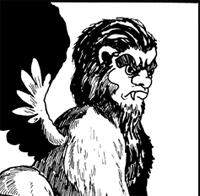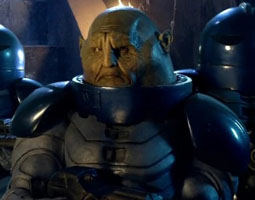Appearances
The Ice Warriors date all the way back to the Second Doctor’s run, a longer TV history than most of the other races I’ll be dealing with in this first batch. They make their debut in the titular story back in 1967, reappearing in The Seeds of Death in the following season. In the classic series, they reappear twice more, in the two Peladon stories during the Third Doctor’s era. Unusually, having been presented as villains in their earlier appearances, in The Curse of Peladon at least, they are shown to be a more complex race that isn’t necessarily evil, and that actively help the Doctor out. Intended returns during the Sixth and Seventh Doctors’ eras were both cancelled along with their respective seasons, so it was nearly four decades before they re-appeared in the Eleventh Doctor story Cold War, and then once more in Twelve’s run. These are perhaps midway between the Second Doctor stories and The Curse of Peladon in terms of their treatment of the race, playing up the ambiguity.






